Why is there no sound on my Samsung UN40EH6000F LED TV but the picture is good?
- SSharon DukeSep 9, 2025
If the picture is good but there is no sound on your Samsung LED TV when using an external device, check the device’s audio output option.

Why is there no sound on my Samsung UN40EH6000F LED TV but the picture is good?
If the picture is good but there is no sound on your Samsung LED TV when using an external device, check the device’s audio output option.
Why is the color on my Samsung UN40EH6000F LED TV screen not correct?
If you find that the color on your Samsung television’s screen is not correct or black and White, frist run a Self Diagnosis on the TV to make sure there are no device issues.
Why is there no sound or low sound on my Samsung LED TV?
If there is no sound or the sound is too low at maximum volume on your Samsung LED TV, check the volume of the device (Cable/Sat Box, DVD, Blu-ray, etc.) connected to your TV.
Why does my Samsung UN40EH6000F turn off automatically?
If your Samsung LED TV turns off by itself, the issue might be with your Timer settings or the Eco-friendly No Signal Power Off feature. Check these settings to resolve the problem.
Why is the color wrong or missing on my Samsung UN40EH6000F?
If the color on your Samsung LED TV is wrong or missing when using a component connection, make sure the component cables are connected to the correct jacks.
How to stop my Samsung UN40EH6000F from flickering and dimming?
If your Samsung LED Television screen is flickering or dimming occasionally, try turning off energy-saving features like the Eco Sensor or the Energy Saving setting.
What to do if the color on my Samsung LED TV screen is not correct?
If the color on your Samsung LED TV screen isn't right or appears black and white, start by running a Self Diagnosis Test to rule out device problems. Also, ensure all connections are consistent and plugged into the correct jacks.
What to do if my Samsung UN40EH6000F LED TV remote control does not work?
If the remote control for your Samsung LED TV isn't working, replace the remote control batteries, ensuring they are inserted with the correct polarity (+/–).
How to fix flickering and dimming on Samsung LED TV?
If your Samsung LED Television is flickering or dimming sporadically, you may need to disable some of its energy efficient features like the Eco Sensor or the Energy Saving feature.
Why is my Samsung LED TV picture quality poor?
If you're experiencing poor picture quality on your Samsung LED TV, start by performing the Picture Test to see if your TV is properly displaying the test image.
Guides the user through the first-time setup process, including language and mode selection.
Details connecting cables, input sources, and using the TV controller.
Illustrates how to connect devices using HDMI and DVI cables.
Explains connecting audio devices via analog and optical cables.
Shows USB media connection and component cable setup.
Instructions on how to install batteries in the remote control.
Lists compatible display resolutions and sync frequencies for HDMI/DVI input.
Guide to viewing, selecting, and memorizing channels using the channel list.
Explains channel list options, timer viewing, name editing, and programmed channel management.
Options to select preset picture modes and detailed adjustments like brightness, contrast.
Fine-tuning options for Gamma, White Balance, Color Tone, and HDMI Black Level.
Settings for noise filters, motion enhancement, and film mode.
Selects preset sound modes and adjusts frequency bands for personalized sound.
Covers SRS TruSurround, language, MTS, Auto Volume, SPDIF, and Audio Delay.
Selects speaker output and resets sound settings to default.
Guides through setting the TV's clock and configuring custom timers.
Options for turning on the TV at specific times or playing media.
Features for Program Rating Lock and setting menu/audio language.
Optimizes TV for gaming and controls on-screen text captions.
Melody option and Auto Protection Time for screen care.
Features like Energy Saving, Eco Sensor, No Signal Power Off, and Auto Power Off.
Tools for Self Diagnosis, Software Upgrade, and contacting support.
Steps to connect USB devices and use the Media Play interface.
Lists supported subtitle formats, video codecs, and format limitations.
Specifies supported audio codecs and format limitations.
Lists restrictions for media playback, such as file system and content limitations.
Instructions for playing music files from a USB device.
Options for playing multiple files, folders, and additional playback functions.
Instructions for viewing photo files from a USB device.
Overview of setup menu options and DivX Video On Demand registration.
Guide to installing the TV wall mount kit safely, including VESA specifications.
Instructions for securing the TV to the wall and using a Kensington lock.
Instructions for assembling the wire holder stand.
Solutions for flickering, dimming, brightness, and color issues.
Troubleshooting for power on/off problems and channel reception.
Addresses poor picture quality, distortion, and color inaccuracies.
Solutions for no sound, low volume, speaker noise, and audio/video sync.
Troubleshooting for no picture, TV not turning on, or turning off automatically.
Solutions for RF, cable/antenna, and remote control connection issues.
Addresses specific problems like component cable interference, full screen display, and unsupported modes.
Solutions for unavailable menus, lost settings, and intermittent audio/video loss.
Explains design features like edge particles and plastic smell, plus cleaning guidelines.
Lists operating conditions, model names, and display resolutions.
Provides physical dimensions, weight, and sound output for various models.
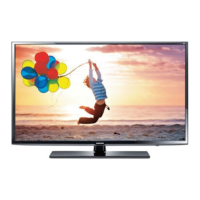
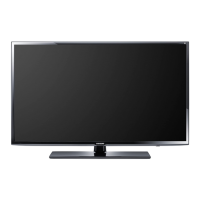
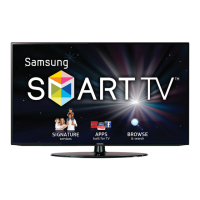




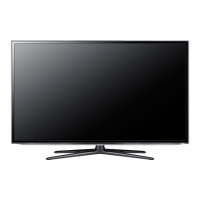
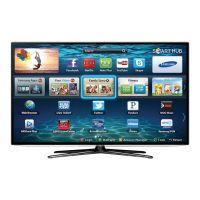



